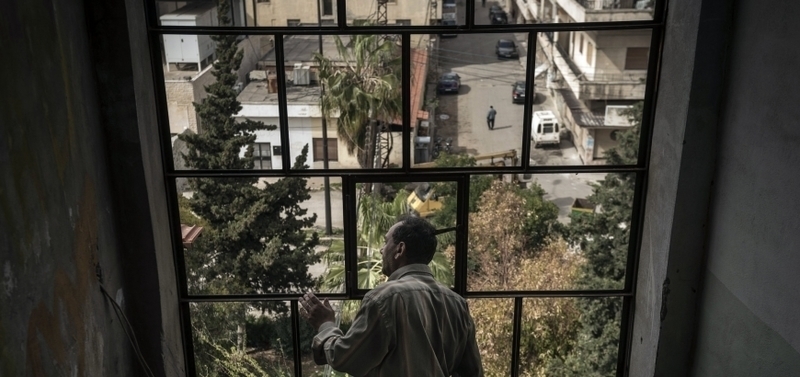The regime’s policy to systematically change the geographic and demographic nature of the city of Homs could lead to the clearing of its local population, either by forced displacement or the forced repossession of property for Alawites and Shiites.
Sources inside Homs have confirmed to al-Souria Net that the city's population are losing their homes to pro-regime Shiites and Alawites, who have seized the homes of locals, using intimidation and force.
Abu Rami, a resident of the city of Homs, was forced to leave his home after enduring fighting and violent bombing.
Abu Rami said: "I had connections with one of the Alawite shabeeha groups, who allowed me to return home. After repairing my house, I was surprised that some Shiite families were seizing homes in the neighborhood. Later on, one of the Shiite families evicted me from my own home, so I tried to ask for help from those who allowed me to return, but it was in vain, as the Shiites in the neighborhood threatened to kill me if me or my other neighbors claimed their homes".
Abu Rami stressed to al-Souria Net that those who claimed the houses by force of arms are searching for the owners to buy the houses from them, but at unreasonable prices with official contracts of sale and transfer of property. The policy has “long been rejected by Homs residents since the days of Hafez al-Assad", as activists confirmed to al-Souria Net.
Abu Rami said seven cases of sale and transfer of ownership have been documented; three houses in as-Siteen Street, a house in al-Asheera neighborhood and three houses in Jeb al-Jandali on Doha Street. Abu Rami said the "settlers" – as he called them – pay only a quarter of the house value, claiming the majority of those who agree to sell their homes have been motivated by fear of death, or the need for money to keep their families alive.
Activist Abu Omar al-Homsi said: "for around a year, some residents of the Shiite villages in eastern Homs and the countryside of Idleb and Aleppo moved to the city of Homs after fighters left the old neighborhoods of the city. They began to renovate homes there, and when the original people of the neighborhood returned, the new residents expelled them by force of arms".
Homsi added that Hafez Assad also began building suburban houses, whether for laborers or military next to the city’s military sites. People from the countryside of Homs, which are home to dozens of Alawite and Shiite villages, settled in these neighborhoods. So Homs turned into a city with sectarian diversity. The city’s original population was mostly Christian and Sunni Muslim, but hundreds of thousands of Alawites and Shia, who settled in the new neighborhoods built by Hafez Assad, became part of the population. They even managed to overlap in some neighborhoods that are in contact with the new neighborhoods, where they bought even more houses".
Homsi stressed that the sons of the city of Homs "were very careful not to let the Alawites get any property in their original neighborhoods or in the market and industrial areas. So Alawites could not buy any property within ancient Homs from Christians or Muslims, despite offering large sums of money to them. The settlement policy within Homs and its neighborhood continued until Bashar Assad came to power".
Translated and edited by The Syrian Observer


